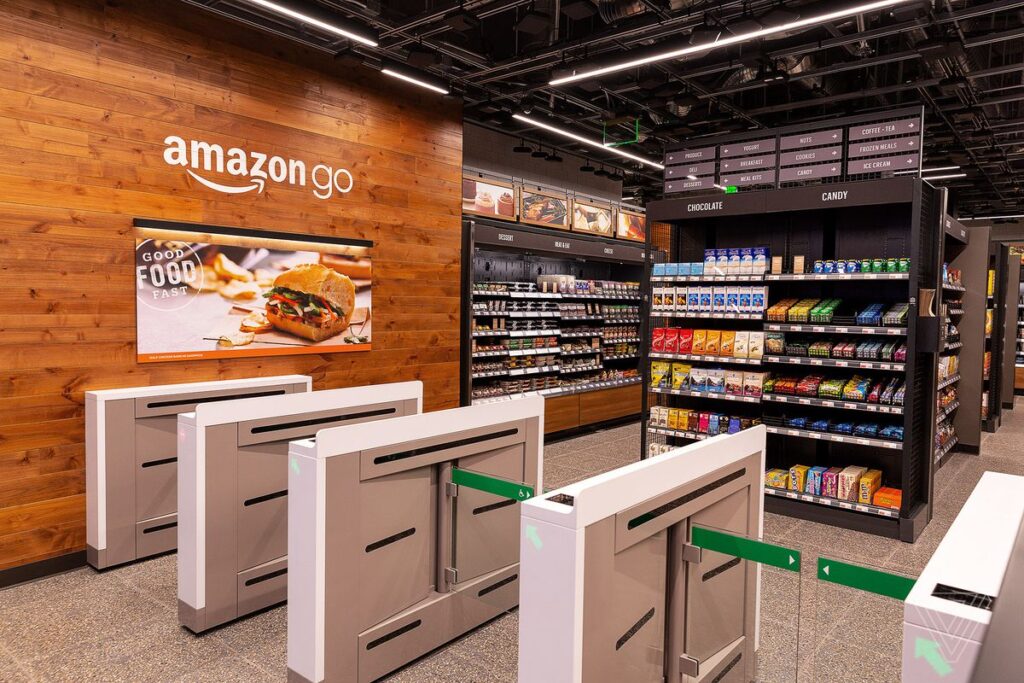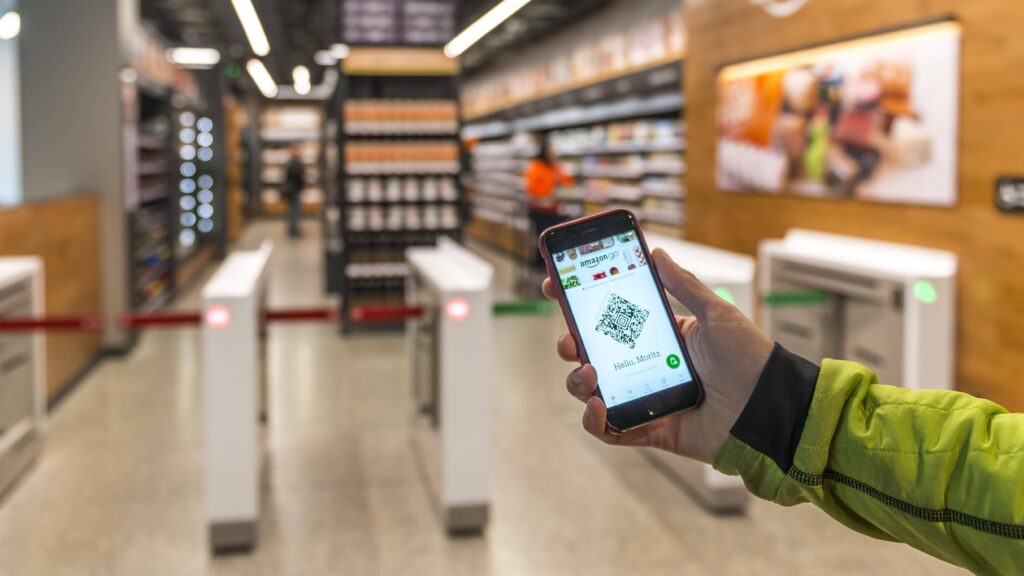Amazon, being a dominant player in the online retail space, possesses the technical know-how and extensive capabilities in the digital realm to observe and analyze customer behavior on its website. It is only logical, therefore, that the company would aim to replicate this ability in the real world by creating its first brick-and-mortar convenience store.
The new Amazon Go store offers a seamless shopping experience by automatically identifying customers as they enter and continuously tracking their movements as they select items from the shelves. Also, automatically calculating their purchases, leveraging past purchase data to enhance their shopping journey. And ultimately, automatically charging their accounts as they exit the store. This frictionless process eliminates the need for conventional checkout lines. Effectively bringing the convenience and efficiency of shopping on Amazon.com to a physical store setting.
This groundbreaking 1,800-square-foot store raises important questions about the balance between privacy and convenience in the physical world. While we have grown accustomed to leaving digital footprints online. The concept of an e-commerce system monitoring our movements in a brick-and-mortar store sparks discussions about privacy concerns.

Currently accessible only to Amazon employees, the Amazon Go store is set to open to the public early next year. Amazon’s engineers and executives have previously submitted patent applications. Which delve into the technical intricacies of their vision for this innovative store.
The vision involves the utilization of various advanced sensors. Patent filings describe the incorporation of image capture devices. Such as cameras, strategically positioned throughout the store to capture images of the surroundings, inventory locations, and customers. Some cameras are placed overhead, while others are positioned near inventory areas. These cameras work together to track the movements of users and items, creating a comprehensive monitoring system within the facility.
In essence, Amazon Go represents a significant advancement in the evolution of retail technology. And its success is likely to shape future discussions about the balance between privacy and convenience in physical retail environments. The patent filing outlines the practical advantages of implementing a system of sensors and data in a retail store or distribution center.
According to the filing, if the inventory management system cannot immediately identify a picked item. As either ketchup or mustard, it can cross-reference the user’s past purchase history and items picked from other locations. For example, if the user has a history of selecting ketchup, the system can infer that the item picked is likely ketchup.
Additionally, the patent explains that the system has the capability to track users within the facility through the use of cameras and facial recognition. Input devices can collect data to identify users upon entry, and their positions can be monitored as they move around. By maintaining the position and user data, the system can identify a user as they pass through a transition area.
The filing also mentions that the system can capture an image of a person’s hand as it interacts with the shelf. The system can analyze the skin color to identify the individual’s hand. And determine if they are placing or removing an item on the shelf.
It’s important to clarify that the patent filing represents a proposal. And Amazon has not disclosed which specific approaches will be employed in the Amazon Go store or whether some methods will be reserved for distribution centers. Consequently, the extent of customer tracking technology used in Amazon Go and its related privacy policies remains uncertain.

The concept described in the patent aligns with Amazon Go’s FAQ, which explains the checkout-free shopping experience utilizing technologies like computer vision, sensor fusion, and deep learning. The Just Walk Out technology detects product movements and tracks them in a virtual cart. It enables customers to leave the store and Amazon will charge it automatically.
The privacy concerns surrounding Amazon’s approach have sparked discussions among technology and retail experts. Some believe that younger demographics may not be greatly concerned about privacy issues, especially in the context of grocery purchases. Giving up some information in exchange for good service has become commonplace in the digital economy. Additionally, the store’s technology could provide valuable consumer data for targeted promotions and advertising. Which some consumers may find convenient, while others may harbor privacy concerns. Ultimately, the level of acceptance and potential regulations will depend on how customers perceive and value the convenience offered by the technology.